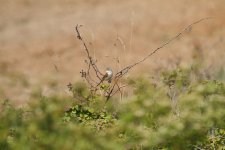-
Welcome to BirdForum, the internet's largest birding community with thousands of members from all over the world. The forums are dedicated to wild birds, birding, binoculars and equipment and all that goes with it.
Please register for an account to take part in the discussions in the forum, post your pictures in the gallery and more.
You are using an out of date browser. It may not display this or other websites correctly.
You should upgrade or use an alternative browser.
You should upgrade or use an alternative browser.
Greetings Everyone! Question for Canon 100x400 users (5 Viewers)
- Thread starter JWellman
- Start date
More options
Who Replied?yorkienuts
Well-known member
Popped out today with my 7D and 100-400 whilst walking the dog. Managed to grab a couple of lucky shots. EXIF intact...
Tim
A couple of great shots:t:
yorkienuts
Well-known member
Hi SS
Thanks considering it's digi-scoped I was very pleased with it. It was taken a Nikon 8400 on a swaro scope. When I can achieve the same with the 400d and 100-400 I will be very pleased indeed!!
Thanks considering it's digi-scoped I was very pleased with it. It was taken a Nikon 8400 on a swaro scope. When I can achieve the same with the 400d and 100-400 I will be very pleased indeed!!
Last edited:
yorkienuts
Well-known member
Popped out today with my 7D and 100-400 whilst walking the dog. Managed to grab a couple of lucky shots. EXIF intact...
Tim
I couldn't get the EXIF when I downloaded????
Yorkie
yorkienuts
Well-known member
Tim
I couldn't get the EXIF when I downloaded????
Yorkie
I've managed to get the EXIF second time around:t: no doubt an age thing:eek!:
yorkienuts
Well-known member
I agree with Tim. Your Robin is a well composed and sharp picture. The eye sparkle is also there. Tim has made some good points there for you and the rules apply nearly every time. Sharpness of the eye, filling the frame as much as possible and catching the light right. Although all these are not always possible in a split second. Keep practicing, you will get almost there. We are all still practicing and never get a perfect picture every time! But that's what keeps us coming back.
That's a brilliant Coot John:t:
Yorkie
tdodd
Just call me Tim
Boy George
Well-known member
The whitethroat is a huge crop. If it's not 100% it's close to it.
Tim,
This is a massively dumb question, but I'll ask it anyway! When you say "100% crop" would this be the percentage which appears in the "Zoom" box in Photoshop Elements 3 (and no doubt other versions) when the magnifying glass + or - is clicked on the image?
I ask because I have not understood other explanations I have read regarding crop percentages. Just a personal blind spot, I guess!
Regards
Adrian
Tim,
This is a massively dumb question, but I'll ask it anyway! When you say "100% crop" would this be the percentage which appears in the "Zoom" box in Photoshop Elements 3 (and no doubt other versions) when the magnifying glass + or - is clicked on the image?
I ask because I have not understood other explanations I have read regarding crop percentages. Just a personal blind spot, I guess!
Regards
Adrian
It's not just me then!! I've been meaning to ask the same question, it's the main one I don't understand either.
Richard
Keith Reeder
Watch the birdie...
Another way of describing a 100% crop is "actual pixels".
tdodd
Just call me Tim
100% crop is when the pixels from your camera are displayed on screen in a 1:1 ratio, or 100%, rather than being resized to some degree.
Depending on your software the way you achieve that may be different. I don't use Photoshop in any flavour, so I won't tell you how to do it there. I use Lightroom and, rarely, DPP.
If we consider the 7D, in total it captures 5184x3456 pixels. If your monitor can only display 1920x1200 pixels, for example, then you can't fit all the pixels from the camera onto the screen at once without resizing. As soon as you resize you lose some of the detail you captured, and the noise, and you lose sight of the original sharpness of the capture, relying instead on what the software does with it when resizing.
To see the whole image on screen you would have to resize the image to 1920/5184*100% = 37% to fit within the screen width. To fit within the screen height you would have to resize to 1200/3456*100% = ~35%. In other words you would be viewing the image at ~35% when viewing to fit to the screen. If your screen is smaller than 1920x1200 then you would have to shrink the image even more.
In order to view part of the image at 100% you make a crop from the original that is smaller than the screen it will be displayed on, allowing for all the menus, toolbars, status bars and so on around the periphery. Thus you would make a crop from the original of maybe 800x533, 1024x683, 1200x800 or something like that. Having selected the pixels to output you must not resize the image further. You must output the image to the exact size you cropped out.
Actually you can make any crop you like. The important thing is that between making the crop and displaying the image at the final destination it must not be resized. If it does get resized then you will not be seeing pixels in a 1:1 ratio, or 100% as intended by the photographer. You will see whatever your display software chose to manufacture. If you use a hosting site like Flickr then, unless you view the original file as uploaded you will be seeing some version invented by Flickr, with its own limitations in resizing and sharpening subtlety. You'll see what Flickr wants people to see, not what you want people to see.
Depending on your software the way you achieve that may be different. I don't use Photoshop in any flavour, so I won't tell you how to do it there. I use Lightroom and, rarely, DPP.
If we consider the 7D, in total it captures 5184x3456 pixels. If your monitor can only display 1920x1200 pixels, for example, then you can't fit all the pixels from the camera onto the screen at once without resizing. As soon as you resize you lose some of the detail you captured, and the noise, and you lose sight of the original sharpness of the capture, relying instead on what the software does with it when resizing.
To see the whole image on screen you would have to resize the image to 1920/5184*100% = 37% to fit within the screen width. To fit within the screen height you would have to resize to 1200/3456*100% = ~35%. In other words you would be viewing the image at ~35% when viewing to fit to the screen. If your screen is smaller than 1920x1200 then you would have to shrink the image even more.
In order to view part of the image at 100% you make a crop from the original that is smaller than the screen it will be displayed on, allowing for all the menus, toolbars, status bars and so on around the periphery. Thus you would make a crop from the original of maybe 800x533, 1024x683, 1200x800 or something like that. Having selected the pixels to output you must not resize the image further. You must output the image to the exact size you cropped out.
Actually you can make any crop you like. The important thing is that between making the crop and displaying the image at the final destination it must not be resized. If it does get resized then you will not be seeing pixels in a 1:1 ratio, or 100% as intended by the photographer. You will see whatever your display software chose to manufacture. If you use a hosting site like Flickr then, unless you view the original file as uploaded you will be seeing some version invented by Flickr, with its own limitations in resizing and sharpening subtlety. You'll see what Flickr wants people to see, not what you want people to see.
tdodd
Just call me Tim
OK, here are samples showing the whole image from my 7D resized down to fit within a 1024 pixel width, which is about 20% without cropping.
I then cropped to a width of 4096 pixels, resizing to 1024 to give a 25% crop.
I then cropped again, to a width of 3072 pixels, resizing once more to 1024 to give a 33% crop.
I then cropped again to 2048 pixels wide and resized that crop to 1024 pixels, giving a 50% crop.
Finally I cropped to 1024 pixels wide, outputting at 1024 pixels to give a 100% crop. i.e. no resizing.
Here are the results....
I then cropped to a width of 4096 pixels, resizing to 1024 to give a 25% crop.
I then cropped again, to a width of 3072 pixels, resizing once more to 1024 to give a 33% crop.
I then cropped again to 2048 pixels wide and resized that crop to 1024 pixels, giving a 50% crop.
Finally I cropped to 1024 pixels wide, outputting at 1024 pixels to give a 100% crop. i.e. no resizing.
Here are the results....
Attachments
Boy George
Well-known member
Tim,
Thanks for taking the trouble to reply in such detail. You've helped me get there in my understanding and interestingly, I may not have been too far out in my question as, I notice that "right clicking" on an open image when using the magnifier, gives the option of "Actual Pixels" and clicking on this selects part of the image which shows as ....100% in the Zoom box! Or am I making 2 + 2 = 5? Anyone?
Regards
Adrian
Thanks for taking the trouble to reply in such detail. You've helped me get there in my understanding and interestingly, I may not have been too far out in my question as, I notice that "right clicking" on an open image when using the magnifier, gives the option of "Actual Pixels" and clicking on this selects part of the image which shows as ....100% in the Zoom box! Or am I making 2 + 2 = 5? Anyone?
Regards
Adrian
tdodd
Just call me Tim
100% = 1:1 = actual pixels.
What is more important is not the amount of the crop, or the size of the image, but the resizing factor, or scaling factor, when converting from the original image for display on the web. The crop is incidental. The only thing is, if you didn't crop first you'd end up with a gigantic image that could not fit onto the screen. That's why people make a crop first. The important bit is whether you are viewing pixels on a 1:1 ratio (100%) or not. If you are viewing at anything other than 100% then you are viewing pixels that have been morphed together or invented by the software used to perform the resizing.
A better way to phrase "a 100% crop" would be to say "a crop sized at 100%". That would be a more accurate way to put it, but "100% crop" is in such common use that everyone uses the short form.
What is more important is not the amount of the crop, or the size of the image, but the resizing factor, or scaling factor, when converting from the original image for display on the web. The crop is incidental. The only thing is, if you didn't crop first you'd end up with a gigantic image that could not fit onto the screen. That's why people make a crop first. The important bit is whether you are viewing pixels on a 1:1 ratio (100%) or not. If you are viewing at anything other than 100% then you are viewing pixels that have been morphed together or invented by the software used to perform the resizing.
A better way to phrase "a 100% crop" would be to say "a crop sized at 100%". That would be a more accurate way to put it, but "100% crop" is in such common use that everyone uses the short form.
Last edited:
Keith Reeder
Watch the birdie...
http://www.birdforum.net/showpost.php?p=2125791&postcount=130I notice that "right clicking" on an open image when using the magnifier, gives the option of "Actual Pixels" and clicking on this selects part of the image which shows as ....100% in the Zoom box! Or am I making 2 + 2 = 5? Anyone?
Boy George
Well-known member
Don't you just hate it when you have to repeat yourself!?!?
I am duly chastened.
Adrian
I am duly chastened.
Adrian
Had my 550D and a 100-400 IS lens for just over a week now and am thrilled with the results compared to my trusty old Panasonic FZ28 with its' 1.7x teleconverter ..
I was advised to keep to F8 in AV mode and alter my ISO to keep a good shutter speed.
Pretty pleased with my results up to now despite having lots to learn and really enjoying doing it too !!
Here is one of my favourites ..
http://i1132.photobucket.com/albums/m577/simmo1111/WillowWarbler3.jpg
I was advised to keep to F8 in AV mode and alter my ISO to keep a good shutter speed.
Pretty pleased with my results up to now despite having lots to learn and really enjoying doing it too !!
Here is one of my favourites ..
http://i1132.photobucket.com/albums/m577/simmo1111/WillowWarbler3.jpg
Similar threads
Users who are viewing this thread
Total: 6 (members: 0, guests: 6)









